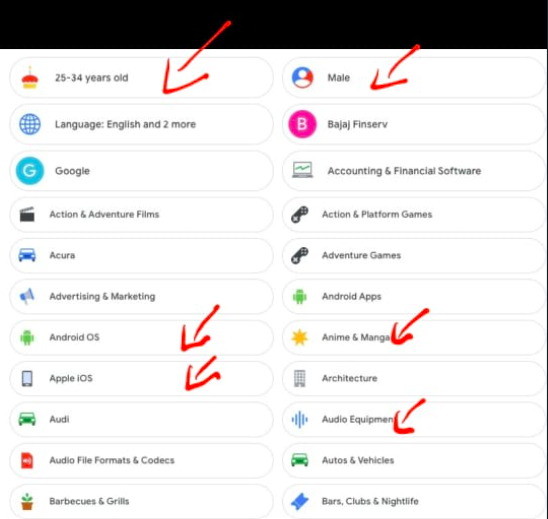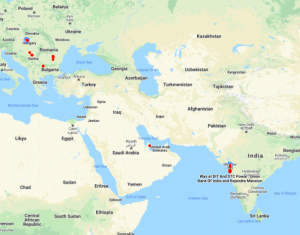In our bid to stay connected, our lives have been splashed over the internet like a milkshake gone bad. Free services by large tech corporations collect our personal data in return for said services. Over time, we’ve become used to this arrangement and seem to ignore the sheer level of integration they have had with our online personas.
This series aims to remind us about ‘What they know’
Yes it is my birthday. Thank you. But how did you know?
In 2016, I turned (a certain age). When I opened Google Search (as one does multiple times a day), the logo had a party hat, decorations and a cupcake. Google decided that me and the other 19 million people who share my birthday would get a celebratory Google doodle.
I’ll be honest. I felt a mix of surprise and excitement. It was one of those feelings that doesn’t hit you till it does. But something felt off. I couldn’t put my finger on it. Then I realised.
I never shared my birthday on any official Google signup links.
When investigated, I realised:
- my default web browser was Chrome, a Google product
- my default search engine was Google Search, a Google product
- my default non-work email was Gmail, a Google product
- my default login on Flipkart was Gmail, a Google product
- my phone, was on the Android operating system, a Google product
And there are millions like me.
Among the X amount of file transfers, emails, conversations, chat apps and search history – there is definitely 10 times my birthday may have come up based on loyalty programs or logins/verification dates on other platforms.
Google knows.
A lot.
Want to open Pandora’s box?
Forget everything.
Step 1: Open your browser
Step 2: Sign in to your Gmail Account.
Step 3: Click here: https://adssettings.google.com/authenticated
Step 4: Have some green tea. It helps with the palpitations.
To give you perspective, here is mine:

This page lists my gender, age range, interests and preferred operating systems
This is only page 1 of 13.
To be fair, Google tells you: “Boss – if you don’t want it, you can switch of ad personalisation”. And you can. This doesn’t solve the problem of them still knowing your digital identity (and using it)
Wherever you go, our network follows
If you’re an Android user, with appropriate permissions, Google recurrently sends your location data to a central server. Although they’re pretty transparent about it, it still seems to be a bit intrusive when you actually see it visualised in front of you.

The picture above is from my timeline. It records my locations for the time between July 2019 and December 2019. While researching this piece, I a tid-bit about how integrated the overall Google eco-system is. If you squint and come about 6 inches closer to the screen, you’ll notice two blue rings – one at Mumbai and one in Hungary. On a stag trip that year, these were our take off and departure points – both ways. This is (probably) a result of a sync to my Gmail (since my flight ticket was received there), my location history (since we used maps to navigate the streets there) and my android device that houses both and is discreetly storing this data like a squirrel with his acorn.
Click here to find out yours.
I have an Android. F***!.
Our cell phones have become one of the most important non-living items in our lives. There is an 80% chance that you’re reading this on a phone right now. Regardless of whether you use it for entertainment, productivity or barely at all, it tracks your usage and behavior.
Besides the information stored on the phone, all operating systems give out some parts of your information to apps. Although this is upto you to approve, quite a lot of apps (like TruCaller) do not work without these permissions. They just refuse to open without your consent for said permissions.
To check permissions you give out to your apps on all your Google devices, click here: https://myaccount.google.com/permissions
So what now?
There is a middle-ground to everything. Google’s motto of ‘Don’t be evil’ still stands in most areas. Most of the links labeled here have some kind of a reset button. There is also a way you could download all your information from the central server. They also have a Privacy checker that allows you to assign rights to certain areas and keep the rest of the information away from 3rd parties – of course Google can still use it. To tackle that, you can could check out the Personalisation Activity tracker and toggle things on/off based on your preference.
If you prefer getting custom ads on your timeline and believe that your personal data being manipulated for gain by a trillion dollar tech company doesn’t mean much, forget what you’ve just read.
However, if you believe that your data should be shared in a controlled manner, some of the suggestions in this essay might help you in your path to sustained internet privacy.
Stay protected.
P.S. Next week, we take on Facebook. See you in a bit.
The views and opinions published here belong to the author and do not necessarily reflect the views and opinions of the publisher.



Leave a comment